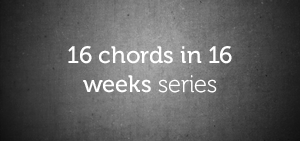If you’re interested in learning about the male and female voices of the seventh chord, then you’re on the right page.
A vast majority of musicians who are interested in learning about ways of playing any particular chord focus on inversions. While the knowledge of inversion is good, it’s a lot better to know about the concept of voicing or chord voicing.
Due to the fact that our focus in this lesson (which is on the male and female voices of the seventh chord) cannot be discussed without the concept of voicing, we’ll be getting started with a short note on the concept of voicing before we proceed to understanding the male and female voices of the seventh chord.
So, give me your undivided attention and in the next seven minutes or so, I guarantee that you’ll be able to identify the male and female voices of every given seventh chord.
A Short Note On The Concept Of Voicing
The first thing that comes to mind when the subject of voicing is mentioned is singing or the voice.
In the study of keyboard harmony, the notes of a chord can be considered as voices or voice parts: bass, tenor, alto, and soprano. The reason for this consideration is primarily because of rearrangement.
Using the concept of voicing, the notes of a chord can be rearranged (using voicing techniques) to produce chord voicings; which are basically rearrangements of a chord. For example, the C major seventh chord:
…can be rearranged using a variety of voicing techniques to produce the following chord voicings:
The drop-2 voicing of the C major seventh chord:
The part-over-root voicing of the C major seventh chord:
…and more.
A Breakdown Of The Voices Of The Seventh Chord
Every seventh chord (that is based on tertian harmony) has four chord tones:
The Root
The Third
The Fifth
The Seventh
In the next few minutes, I’ll be showing you what the male and female voices of every given seventh chord are. Are you ready?
Alright!
The Male Voices Of The Seventh Chord
The root and the third tone of every seventh chord are its male voices. In a classical choir, the male voice parts are the bass and tenor voices.
In the case of the seventh chord, the root is the bass voice while the third tone is the tenor voice. So, using the C major seventh chord (as a reference):
The root (which is C):
…is the bass voice.The third tone (which is E):
…is the tenor voice.
Altogether, the male voices of the C major seventh chord:
…are C and E:
The Female Voices Of The Seventh Chord
The female voices in choral music are soprano (which is the first voice) and alto (the second voice).
Attention: The soprano is called the first voice because it is the voice part with the melody most of the time. Also, the soprano voice is traditionally the highest sounding voice part.
In terms of the seventh chord (our concern in this lesson), the two upper voices of a seventh chord: which are its fifth and seventh tone are the female voices.
In the C major seventh chord:
…the highest sounding voice (which is B):
…is the soprano voice and it’s followed by G (which is the second voice):
So, we have the two female voices in the C major seventh chord as G and B:
…which are the alto and soprano voices respectively.
Final Words
In a subsequent lesson, I’ll be showing you to play cyclical chord progressions using your knowledge of the male and female voices in a seventh chord.
For now, it’s recommended for you to play various seventh chord types on the keyboard and try to differentiate male voices from female voices and vice-versa.
See you in the next lesson.
Chuku Onyemachi
Latest posts by Chuku Onyemachi (see all)
- The Formation Of Diminished Seventh Chords Used To Be Challenging Until I Did This
- How To Form Seventh Chords In Two Shakes Of A Dog’s Tail Using Third Intervals And The Circle Of Fifths Chart
- I Played The 13sus4 Chord And This Happened…
- How To Build Seventh Chords Like An Architect Using “Foundation And Structure” Concept
- This 4-Week Plan Will Help You Master All The Major Scales







Comments on this entry are closed.